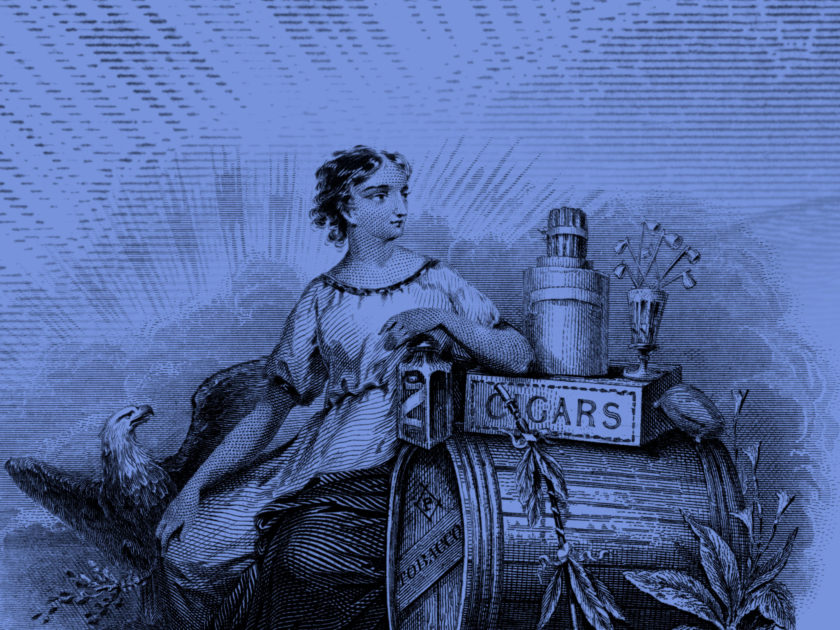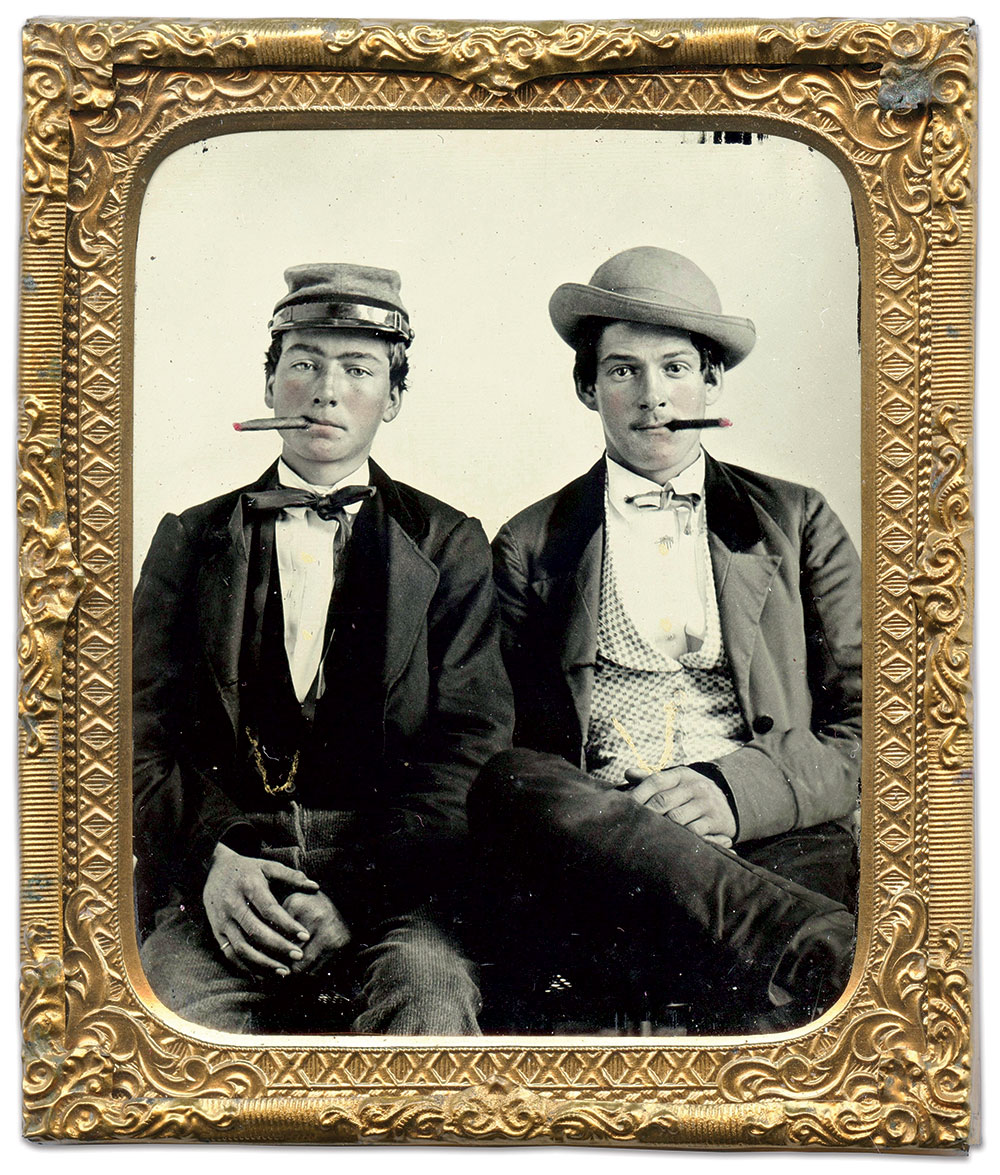
Two young patriots, one wearing a military cap and the other with a Union pin attached to the placket of his shirt, enjoy fine cigars with red-tinted ash.
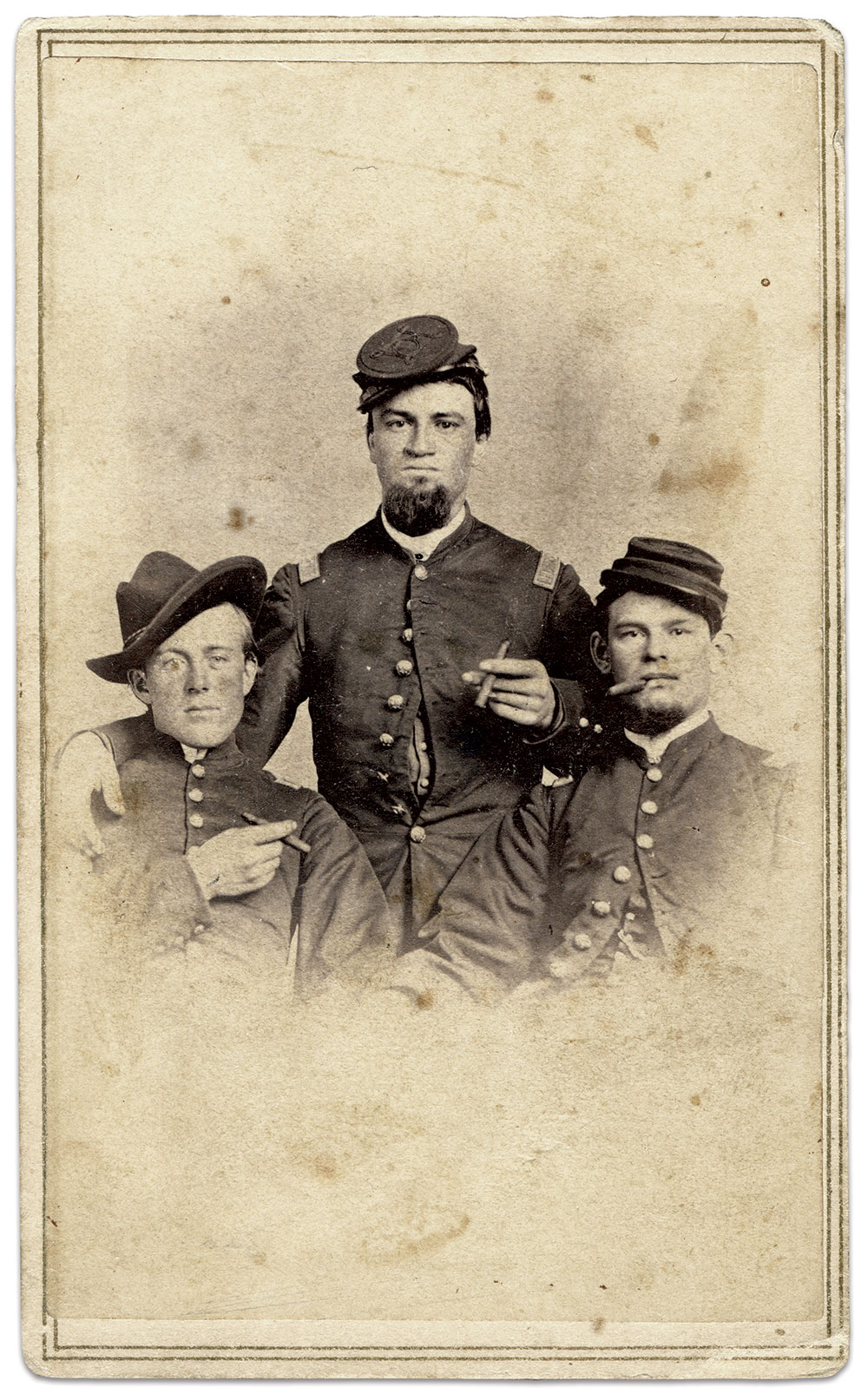
Inscriptions in separate hands at different times raises more questions than answers about the identities of these smoking sitters—“Please except this as a token of our love towards you Dear Ella,” “Taken in 1863 Army Captains” and “Friends of my great aunt Ella during the Civil War.”

Trading cigars has been an honored tradition among friends—and comrades—who want to enjoy new smokes. Perhaps that’s the gist of the pose by this sergeant and enlisted man.

Maj. Gen. George Stoneman wags a finger in the direction of Brevet Maj. Gen. Alvan C. Gillem, a Tennessee-born officer who remained Union loyal. The cavalry commanders survived the war and faced controversy against Indian nations in the West. Stoneman went to Arizona and Gillem to California, where he fought in the 1873 Modoc War and was whipped by warriors at the Battle of Sand Butte. Gillem died in 1875. Stoneman lived until 1894.
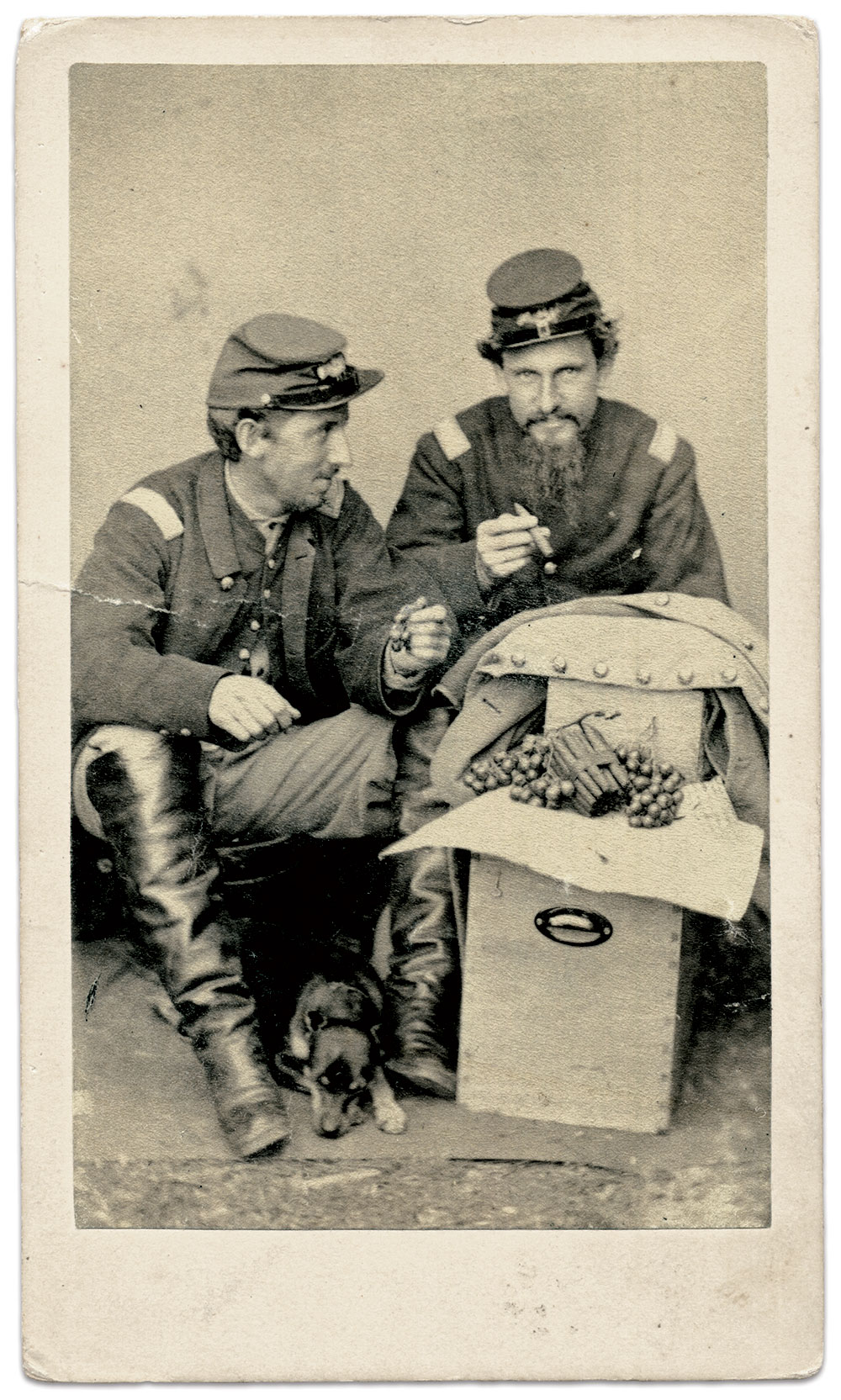
Muscadine grapes and cigars appear to be the order of the day for these jovial federal officers. They seem in tall cotton over their good fortune. The grapes and cigars may have been a gift from home prompted by a story since lost in time. One thing is definitely known—the dog has no interest in the festivities.

A young man wearing a military cap with a wreath insignia enjoys a smoke with a friend.

This cigar-smoking Zouave is one of nearly 250 three-year men transferred from the 5th New York Infantry, or Duryee’s Zouaves, to the 146th New York Infantry in May 1863. Their comrades had served out their two-year enlistment and travelled home to muster out of service. To the delight of the men, the 146th received the distinctive Zouave uniform on June 3, 1863. This corporal apparently served in the old 5th, as he wears the uniform of the 146th with a 5th New York sash that incorporated a triangle in the trim. The sash of the 146th did not.

The aroma from the cut flowers could not compete with the smell of cigar smoke wafting from this young man’s stogie. The regimental number painted on his cap indicates he hailed from New York, Ohio or Pennsylvania.

A musician from Company C grasps his lapel in a decidedly jaunty pose.

This soldier wears casual dress and relaxed expression that may reflect a lazy summer’s day in camp.

A Union trooper clenches his jaw around a smoke.

A captain props his feet up on a chair and enjoys a cigar. His jacket, hanging behind him, and the Stars and Stripes complete the picture.
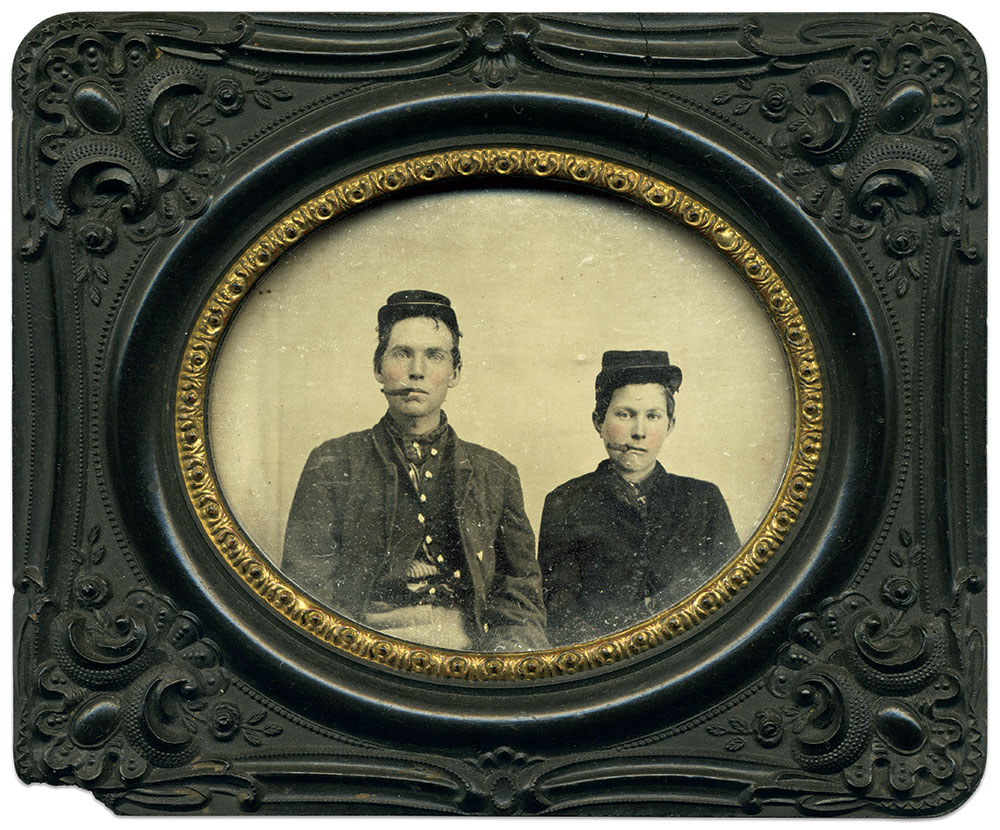
The commanding general of Union forces always seemed to have a cigar clenched between his teeth. Perhaps the habit spread down the ranks as well. Here, the young fellow at far right—maybe brother to the soldier beside him—does his best to chew on a stogie à la Gen. Ulysses S. Grant.
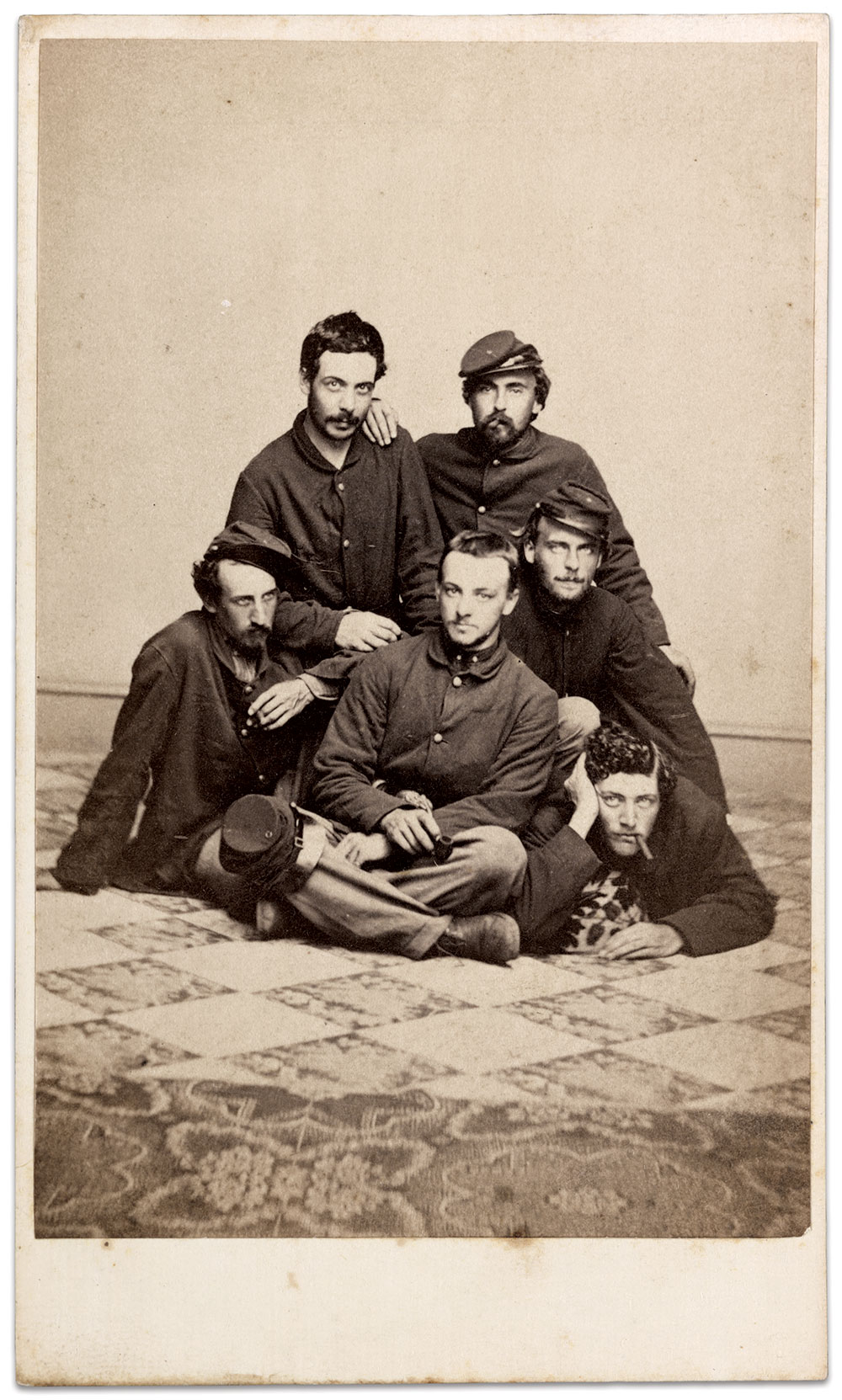
Union soldiers dressed in four-button sack coats hold cigars and a pipe in an artful group pose.

Carte de visite by Bendann Brothers of Baltimore, Md. Karl Sundstrom Collection.
A fresh cigar is one of the trappings of war pictured in this portrait of 1st Lt. and adjutant William J.A. McGrath. A popular officer in the 22nd New York State Militia, he inscribed the back of the mount with “Camp Aspinwall, Bolivar Heights, near Harpers Ferry, Va.” McGrath and his comrades were stationed here from mid-to-late 1862. He numbered among those in the regiment activated the following year during the Northern invasion by Gen. Robert E. Lee’s Confederates. McGrath resumed life in New York City after these deployments, and went on to become a lawyer prior to his death in 1886 from Bright’s Disease at about age 50.
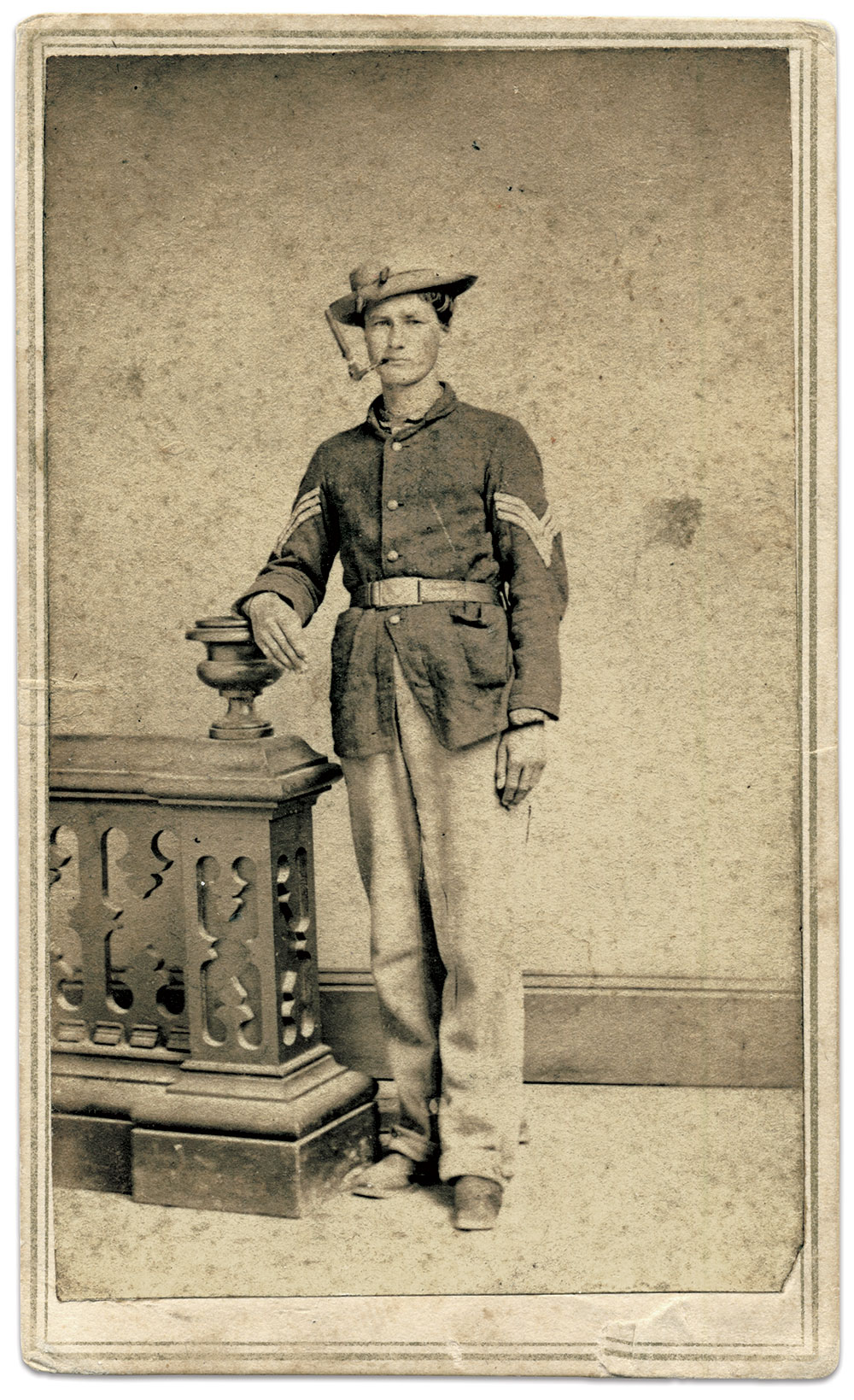
The vast majority of soldiers selected a cigar or pipe. But this sergeant made his pipe into a cigar-holder. The practice of smoking this way is uncommon.

On “Detached Service” suggests strong drink and cigars for this group attended by a servant. Inscribed on the back is the date, May 15, 1864, and the names of the seated men. Three are Union officers: Col. James Durrell Greene (1828-1902), inventor of the Greene breechloading rifle, sits on the far left. Next to him is Lt. Col. J. Smith Brown (1835-1866) of the 1st U.S. Sharpshooters and 126th New York Infantry, and serving as U.S. Inspector in the Bureau of Provost Marshall General for Wisconsin. Seated on the far right is Lt. Col. Arthur Jacobi (1826-1888) of the 9th Wisconsin Infantry.

A young trooper sits with a stogie in one gauntleted hand and a glass in the other, alongside his top-hatted friend.
SPREAD THE WORD: We encourage you to share this story on social media and elsewhere to educate and raise awareness. If you wish to use any image on this page for another purpose, please request permission.
LEARN MORE about Military Images, America’s only magazine dedicated to showcasing, interpreting and preserving Civil War portrait photography.
VISIT OUR STORE to subscribe, renew a subscription, and more.

